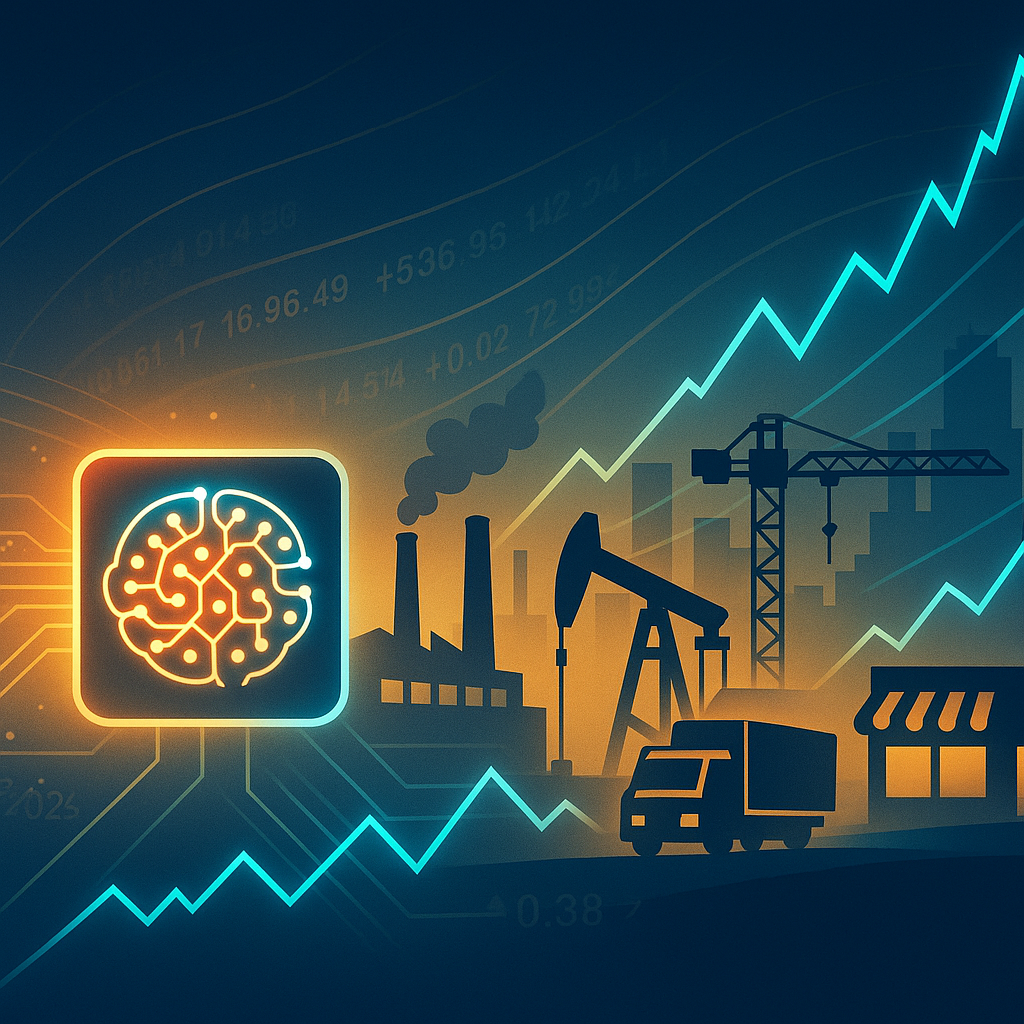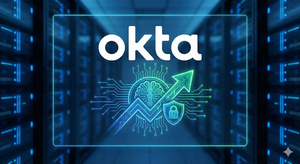
Artificial intelligence continues its dominant run as a primary engine of the stock market, yet a significant and healthy rebalancing is underway. After a period where market leadership was heavily concentrated in a select group of mega-cap technology firms, the landscape is now expanding. This pivotal shift sees cyclical stocks and a wider array of sectors stepping into the spotlight, signaling a potentially more robust and diversified economic expansion.
The initial AI surge, largely fueled by the "Magnificent Seven," created unprecedented wealth in a concentrated segment of the market. However, as AI technology matures and its applications permeate various industries, investors are broadening their horizons. This evolving dynamic suggests a move towards a healthier market driven by a wider range of businesses, indicating a more sustainable growth trajectory beyond the tech giants.
The Shifting Tides of Market Leadership
The global stock market has been profoundly reshaped by the advent of artificial intelligence, particularly since the widespread adoption of generative AI models in late 2022. Initially, this "AI computing revolution" propelled a handful of mega-cap technology companies—dubbed the "Magnificent Seven" (Apple (NASDAQ: AAPL), Microsoft (NASDAQ: MSFT), Alphabet (NASDAQ: GOOGL), Amazon (NASDAQ: AMZN), Nvidia (NASDAQ: NVDA), Tesla (NASDAQ: TSLA), and Meta Platforms (NASDAQ: META))—to unprecedented valuations. These firms, especially Nvidia (NASDAQ: NVDA) with its dominant position in AI chips, became the primary beneficiaries of an investment frenzy driven by excitement over AI breakthroughs and a supportive monetary environment. AI-powered algorithms also became central to market dynamics, processing vast datasets for sentiment analysis, predictive modeling, and high-speed algorithmic trading, which now accounts for a significant portion of daily trading volumes, increasing efficiency but also raising questions about systemic risk.
However, a notable rebalancing is now firmly underway, marking a critical juncture in the market's trajectory. While the transformative potential of AI remains undisputed, investor sentiment is evolving beyond the concentrated gains of the tech elite. Concerns have emerged regarding the ability of some mega-cap AI applications to consistently deliver the outsized returns needed to justify their lofty valuations. Many enterprise AI pilot programs, while promising, have yet to translate into measurable financial returns, highlighting a potential gap between AI hype and immediate reality.
This shift has redirected investment focus towards a broader spectrum of companies, including long-overlooked value stocks and small-cap firms. The AI revolution itself is expanding beyond just cloud giants and chipmakers; there's growing interest in companies building the "middle layer" of the AI ecosystem—firms that turn data into tangible value across various sectors. Additionally, demand for AI infrastructure is no longer solely concentrated among a few major cloud providers, with national governments launching "sovereign AI" initiatives and specialized "Neo Cloud Providers" gaining traction, indicating a more distributed and diversified infrastructure build-out.
The broadening of market leadership signifies a move towards a healthier, more robust economic expansion. Rather than growth being confined to a narrow segment, a wider array of sectors and businesses are beginning to contribute to overall market performance. This diversification is seen as a positive indicator for the market's long-term sustainability, spreading both the opportunities and the risks associated with the ongoing AI revolution across a larger segment of the economy.
Winners Emerge Beyond the Usual Suspects, While Others Face Scrutiny
The landscape of market winners and losers is evolving as AI's influence permeates deeper into the economy, moving beyond the initial cohort of mega-cap tech companies. Unquestionably, the initial and sustained winners have been the foundational AI technology providers. Nvidia (NASDAQ: NVDA) remains a prime example, with its graphics processing units (GPUs) being indispensable for AI model training and deployment. Similarly, other semiconductor companies and cloud infrastructure providers like Microsoft (NASDAQ: MSFT) with Azure and Amazon (NASDAQ: AMZN) with AWS continue to benefit from the massive capital expenditure on AI infrastructure. However, as valuations in this segment become stretched and competition intensifies, the focus is shifting to a broader set of beneficiaries.
Cyclical stocks, often highly sensitive to economic growth, are increasingly seen as beneficiaries. The industrials sector is particularly well-positioned, with companies like General Electric (NYSE: GE) and Siemens (ETR: SIE) integrating AI for automation, predictive maintenance, and optimized manufacturing processes, leading to enhanced efficiency and cost savings. The energy sector is also benefiting from stable commodity prices, and AI is playing a role in optimizing material development and production efficiency in firms like ExxonMobil (NYSE: XOM) and Chevron (NYSE: CVX). These companies, once considered traditional economy stalwarts, are now leveraging AI to modernize operations and drive growth.
The healthcare and materials sectors are also emerging as significant winners. In healthcare, AI is transforming everything from advanced product design and drug discovery to improving diagnostic accuracy by analyzing vast clinical datasets. Companies like Consensus Cloud Solutions (NASDAQ: CCSI), focused on digitizing healthcare data with AI, are seeing renewed interest. The materials sector is experiencing accelerated discovery of new materials and optimized production processes through AI, identifying defects and improving product quality. In the financial sector, AI is revolutionizing risk assessment, fraud detection, and customer engagement for institutions like JPMorgan Chase (NYSE: JPM) and Bank of America (NYSE: BAC), by analyzing historical data, monitoring transactions in real-time, and offering tailored financial advice.
Conversely, some companies that heavily rode the initial AI wave without clear, sustainable revenue models or those facing intense competition and regulatory scrutiny may see their growth narratives challenged. While not outright "losers," firms with extremely high valuations that struggle to demonstrate a clear return on AI investments could experience increased volatility. Furthermore, businesses that fail to adapt and integrate AI into their operations risk being outmaneuvered by more agile, tech-forward competitors, potentially leading to erosion of market share and profitability over the long term, regardless of their sector.
Broader Implications and Industry-Wide Transformation
This broadening of market leadership signals a significant maturation of the artificial intelligence revolution, extending its reach far beyond the initial tech enablers. This event fits into a broader industry trend where technological innovations, after an initial period of concentrated growth, typically diffuse across various sectors, creating new efficiencies and business models. The internet boom of the late 1990s and early 2000s, for example, eventually permeated every industry, not just the dot-com pure-plays. AI is following a similar trajectory, moving from a specialized technology to a fundamental utility that can enhance productivity and innovation across the entire economic spectrum.
The ripple effects on competitors and partners are profound. Industries that have historically been less "tech-forward," such as manufacturing, logistics, and traditional finance, are now being compelled to invest heavily in AI to remain competitive. This creates opportunities for AI consulting firms, specialized software developers, and system integrators. Partners in the supply chain, from raw material providers to logistics companies, must also adapt their operations to support AI-driven demand and processes. For instance, the increased demand for data centers and AI chips has a direct impact on the power generation and construction sectors, creating a cascading effect throughout the economy.
Regulatory and policy implications are also coming to the forefront. As AI's influence expands, governments worldwide are grappling with how to regulate its development and deployment to ensure ethical use, prevent monopolies, protect data privacy, and manage potential job displacement. Discussions around AI governance, explainability, and accountability are intensifying, with potential legislation on the horizon that could impact everything from data usage policies for tech giants to AI safety standards for autonomous systems in industrials. This regulatory uncertainty adds another layer of complexity for companies across all sectors looking to adopt or develop AI.
Historically, periods of significant technological advancement, such as the industrial revolution or the internet age, have always led to a reordering of market leadership. Initially, the innovators and enablers capture the lion's share of value, but over time, the benefits spread as adoption becomes widespread. The current shift is reminiscent of the post-dot-com bust era, where the market diversified beyond pure internet plays to embrace companies that effectively leveraged internet technologies in traditional sectors. This pattern suggests a healthier, more sustainable growth cycle for the market, less reliant on the fortunes of a few select companies and more reflective of broad economic transformation.
What Comes Next: Navigating a Diversified AI Economy
Looking ahead, the stock market is likely to continue its evolution towards a more diversified leadership structure, driven by the pervasive integration of artificial intelligence. In the short term, investors should anticipate continued volatility among the mega-cap tech stocks as the market calibrates their long-term growth prospects against current high valuations. Concurrently, cyclical stocks and other sectors that effectively leverage AI to improve operational efficiency, enhance customer experiences, or develop innovative products are poised for sustained growth. The anticipated stabilization or decline in Federal Reserve interest rates in late 2025 is expected to further benefit a wider array of companies, particularly small-cap firms sensitive to economic cycles and with higher debt loads, making them attractive due to monetary easing and currently appealing valuations.
In the long term, the "AI computing revolution" will fundamentally reshape industries, demanding strategic pivots and adaptations from nearly all businesses. Companies that can successfully integrate AI into their core operations, not just as a bolt-on solution but as a strategic differentiator, will thrive. This includes enterprise software integrators like Salesforce (NYSE: CRM), ServiceNow (NYSE: NOW), and Oracle (NYSE: ORCL), which are embedding AI directly into their platforms to automate workflows and improve decision-making for their vast enterprise client base. Furthermore, the demand for essential AI components will broaden, extending beyond just GPUs to specialized memory manufacturers like Micron Technology (NASDAQ: MU), whose DRAM and NAND solutions are critical for advanced AI systems.
Market opportunities will emerge in less obvious areas, such as companies facilitating the "middle layer" of the AI ecosystem – firms that specialize in data annotation, model training, AI security, and ethical AI deployment across various sectors. The focus will shift from simply having AI to effectively implementing and monetizing AI solutions at scale. Challenges will include navigating increasing regulatory complexities, managing the ethical implications of AI, and addressing potential skill gaps in the workforce. Companies will need to invest in retraining and upskilling their employees to leverage AI tools effectively, or risk falling behind.
Potential scenarios include a continued, gradual broadening of market leadership, where AI acts as an accelerator for a diverse range of industries. Another scenario could see a "second wave" of AI-driven innovation emerging from unexpected sectors, as smaller, agile companies leverage accessible AI tools to disrupt established markets. Investors should also consider the geopolitical implications of AI, as national governments increasingly view AI capabilities as a strategic imperative, potentially leading to further investments in sovereign AI initiatives and a global race for AI supremacy.
Conclusion: A More Distributed Future for AI-Driven Growth
The current financial landscape reflects a pivotal moment where artificial intelligence remains a dominant market force, but its economic dividends are becoming increasingly distributed. The initial surge, largely concentrated in a handful of mega-cap technology companies, has given way to a healthier, more diversified market leadership. This broadening embrace of AI across cyclical stocks and a variety of other sectors – from industrials and healthcare to financials and materials – signifies a maturation of the AI revolution, transforming it from a niche technological marvel into a pervasive economic utility.
The key takeaway for investors is that while the foundational AI tech giants will likely continue to be important players, the opportunities for growth are no longer confined to them. The market is increasingly rewarding companies that can demonstrate practical, value-creating applications of AI within their specific industries. This shift provides a more robust and sustainable foundation for market growth, reducing the concentration risk that was prevalent during the initial AI boom.
Moving forward, investors should watch for continued capital expenditure in AI infrastructure, but also critically assess how companies beyond the "Magnificent Seven" are integrating AI to drive tangible improvements in productivity, efficiency, and innovation. The ability to translate AI potential into measurable financial returns will be a key differentiator. Furthermore, keeping an eye on regulatory developments related to AI will be crucial, as new policies could significantly impact how companies develop and deploy AI technologies. The market is not just an "AI market" anymore; it's a market where AI is moving from being a product to being an enabler for nearly every product and service, ushering in a new era of distributed, technology-fueled growth.






